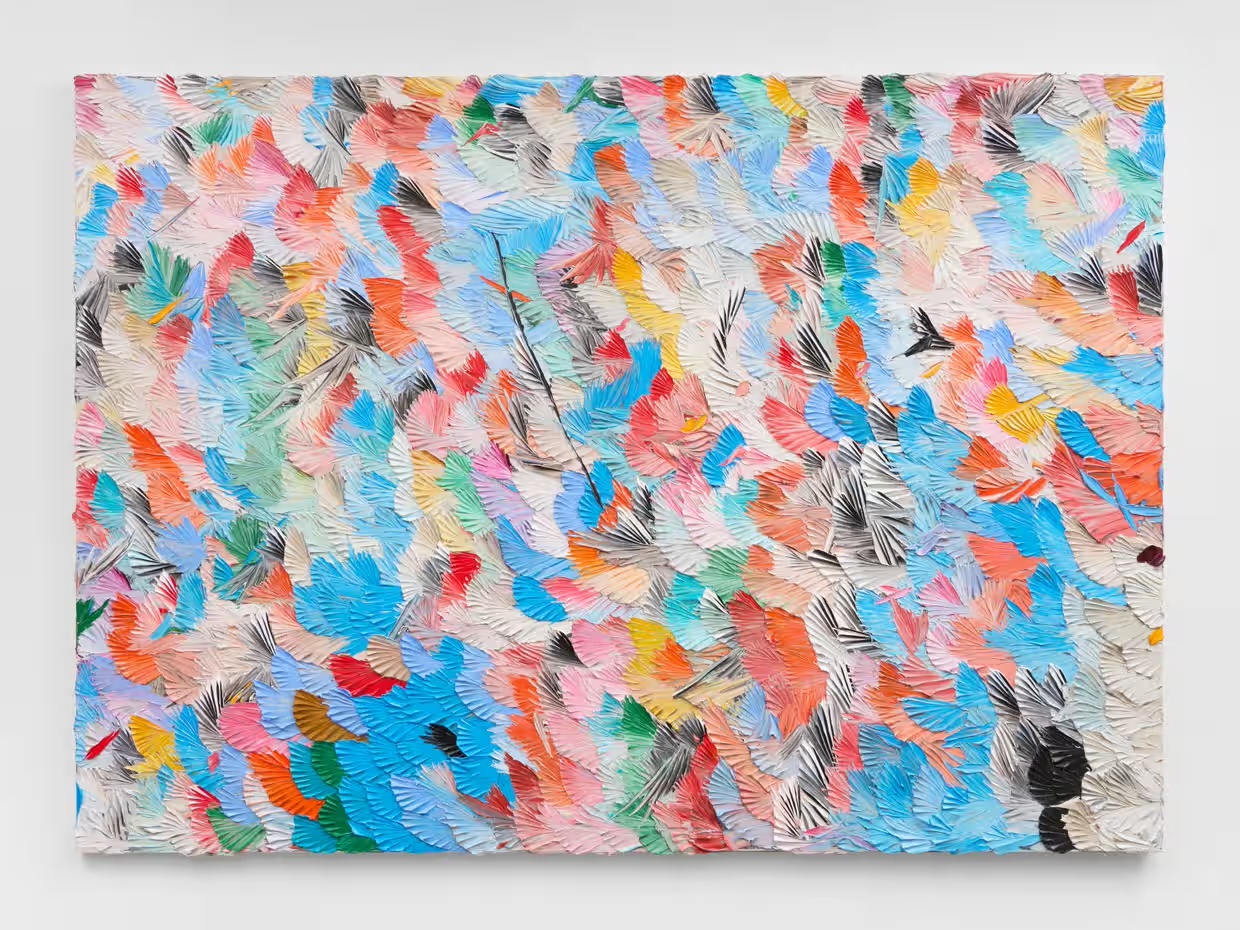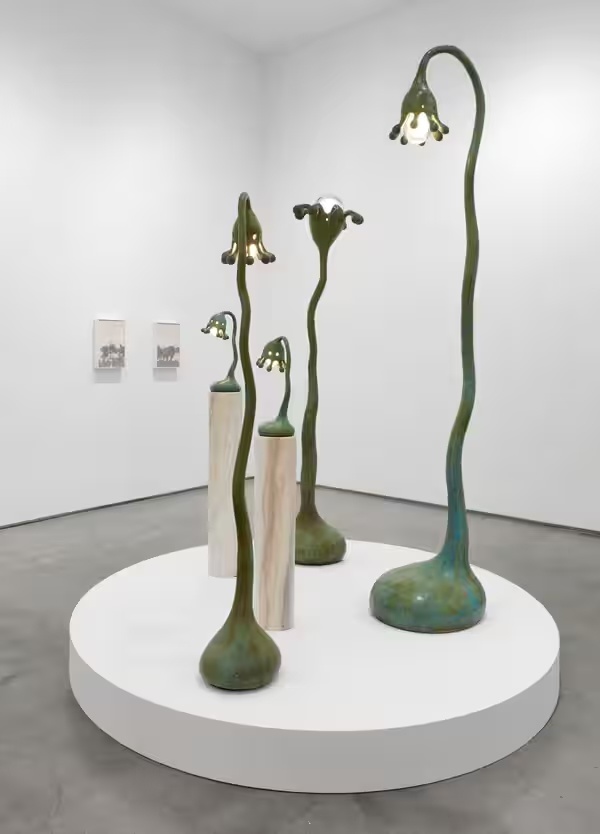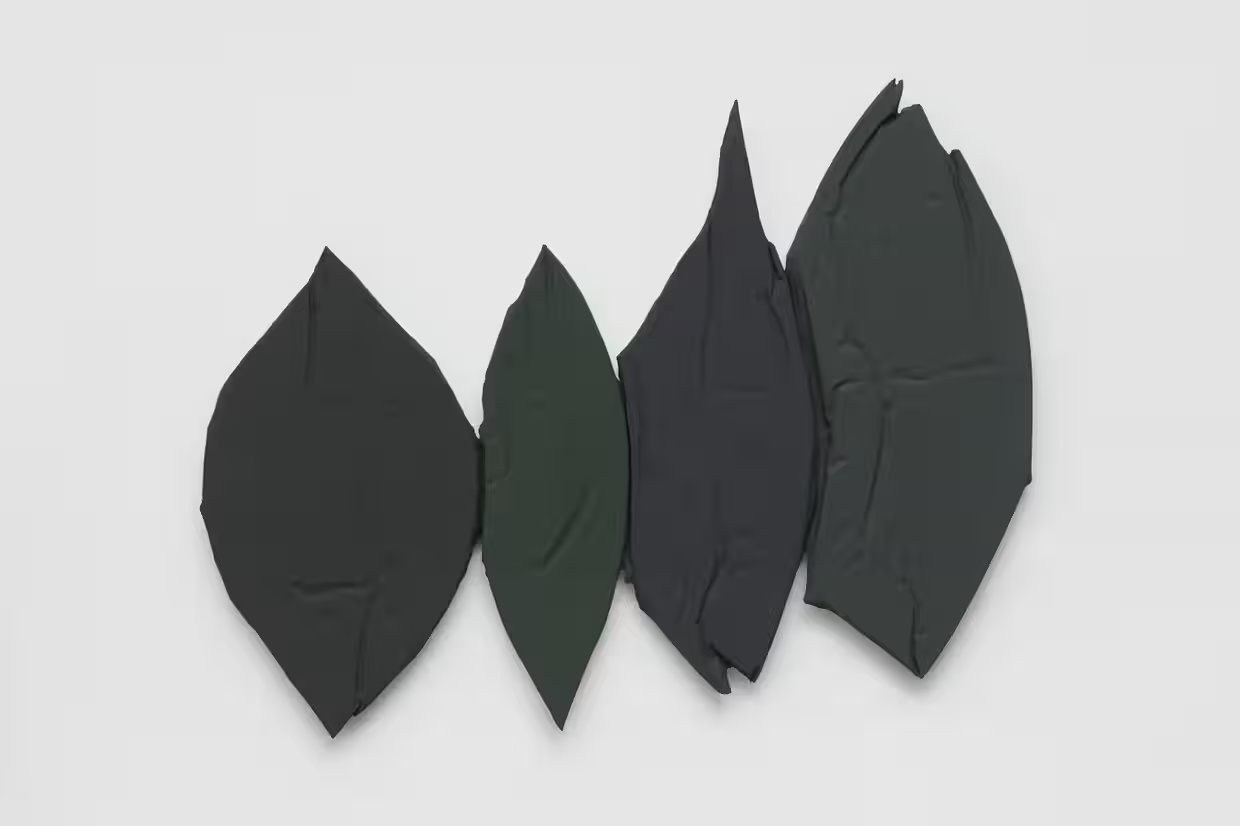BY VERONICA ESPOSITO
The California artist Dashiell Manley had been at work for over a year on the paintings he was to exhibit at Marianne Boesky Gallery’s elegant new show California Is Somewhere Else when fate intervened. In early January, he set the works to dry in his studio in Altadena – and two days later nearby Eaton Canyon was engulfed in flames, part of recent California wildfires. “My sense of security was shattered around 11pm on January 7th,” Manley told me via video interview. “I went in the studio and it was smoky, and all the paintings were wet.”
That night, Manley’s thoughts were more preoccupied with protecting his family and grabbing on to what precious mementoes he could take with him as he fled the fires. His studio was ultimately spared, but the paintings were not: smoke and other particles embedded into the still-wet surface, ruining the pieces. “I don’t know that I’ve processed that these 10 paintings that I’ve spent a year working on are gone,” he told me. “They smell like a camp fire, and there’s lead particles in the surface – I don’t want to touch them. It’s weird how they’re gone but they’re not.”
In lieu of those works, Manley is showing a suite of vibrantly colorful, intricately layered oil pieces, in which he uses a palette knife to painstakingly carve innumerable overlapping objects resembling a folding fan into the paint. Using the back of his hand for a palette, Manley works quickly, layering up color upon color on to the linen canvass.
“I go back into them multiple times, it’s a very additive and layered process,” he said. “It’s largely muscle memory and intuition at this point. I could duplicate the painting but I couldn’t tell you how.”

The resultant pieces have a structural quality reminiscent of the layered paintings of Jay DeFeo. There are many points for the eye to access them, pleasurably wandering around throughout the intricate networks of color and texture. “I’ve always wanted to make work that has as many entry points to the viewer as possible,” Manley said.
The colors comprising Manley’s paintings are analogous to those that encompass the tones of a southern California sky from dawn to dusk: a range of blues, reds, oranges and yellows. Flecks of green are mixed in, along with veins and pops of black that provide structure and weight to the overall composition. “I’ve been struck by beauty being a counterpoint to grief,” he said. “Working on these paintings has become a kind of routine, in a good way. I noticed how meaningful that routine was for me after the Eaton fire, and how this is something I can never really stop doing.”
The Haas Brothers’ gorgeous, art nouveau Moon Towers sit comfortably alongside Dashiell Manley’s paintings in the exhibition. Nikolai Haas and his twin brother, Simon, have always felt deeply influenced by the southern California landscape and way of life. Together, they create dreamy, tactile sculptures informed by a lifelong connection to the California way of being.

“It’s just like, things come from nothing here,” Nikolai told me while musing on the feeling of being a Californian. “There’s something about the landscape and the vibe and the energy here. There’s something about California being so geographically removed from rest of the US historically, it being so difficult to get here. It’s its own kind of place.”
The Moon Towers are inspired by actual streetlights that were a common part of cityscapes throughout the 1800s but that went into decline around the turn of the century. A few such streetlights still existed in Austin in the 1990s, where the Haas Brothers spent several youthful years. Once they returned to California, they brought memories of the towers with them and began working on their own takes on the structures. “In the 90s, Austin was at the top of its alt moment,” Nikolai said. “It was a very 90s, grunge stoner culture. For us the Moon Tower is the hero of that moment in our upbringing. Going back home, we wanted to make something that signified our creative growing up.”
Simon added: “If I could city plan Los Angeles, I’d do a lot of things, and one would be to install Moon Towers. They’re so big that they light up whole neighborhoods, but the lighting is low-key, moonlike. We’re trying to capture that feeling and pay homage to this different perspective. Moodwise we’re leaning into this dreaminess, the safety and fantasy and sheer LA of it.”
Inspired by snowbells, the pieces rise up in lithe, sinuous columns of jade green, then droop over at the top, where a lightbulb is inserted, casting a carefully chosen hue. Some of them rise up to almost 9ft in height, while others would fit comfortably on to an end table. The brothers worked carefully to find just the right temperature of lightbulb to give their sculptures a transportive glow for any who stand within their light. “We want to create an experience,” said Nikolai. “Something to take someone a little out of their reality.”

The show is rounded out by Anthony Pearson’s minimalist sculpture, whose seeming simplicity belies an exacting technique that leaves the surfaces of his pieces covered in networks of densely worked texture. These are deeply meditative works that draw in a viewer’s eye with their beguiling plays of light, and that reward careful, lengthy examination. As Taney Roniger put it in The Brooklyn Rail: “the strongest unifying thread here is the sense of mystery and wonder that these works exude … [T]hese pieces encourage a shift away from discursive reason toward deeper, more intuitive reflection, and the effect is a rich contemplative experience.”
What makes California Is Somewhere Else such a remarkable success is how its works so effortlessly showcase the sublimity that lives in California – both in its landscape and its cityscape – and that is a key ingredient in the psyche of the Golden state. A place of excesses and enormities, it nonetheless inspires a sense of safety and familiarity that gives rise to fantastic flights of artistic fancy. As Manley put it: “When I feel like I’m out of my body, I go to the mountains, I have this hike with these giant rocks. I lay on these rocks, and everything that is so monumentally large in those moments becomes small. I feel small, everything becomes small. There’s so much beauty in this experience.”




